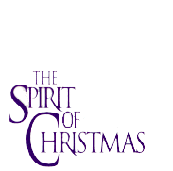History of Canadian Thanksgiving
The first Thanksgiving is believed to have been held in 1578 by English explorer, Martin Frobisher. He had been trying to find a route to the Spice Islands in the Orient. The ceremony was held in what is now the Baffin Islands. He was later knighted and Frobisher Bay was named after him.
On October 10th, 1710, Port Royal, Nova Scotia held a Thanksgiving day to celebrate the return of the town to the English. And again in 1763, Halifax celebrated the end of the Seven Year War with a Thanksgiving ceremony.
Since 1879, Canadian Parliament has chosen many dates for Thanksgiving. After World War I, both Armistice Day (now Remembrance Day) and Thanksgiving were both held on the Monday before November 11th. Thanksgiving became it's own celebration again in 1931. Then on January 31st, 1957, Canadian Parliament declared "a day of general thanksgiving to Almighty God for the bountiful harvest with which Canada has been blessed . . . to be observed on the 2nd Monday in October."; thus giving Thanksgiving a more permanent date.
Traditions
At the heart of the celebration is giving thanks; thanks for the harvest, food, family, friends. Canadians also reflect back on their ancestors' pioneering spirit, and the beauty and bountifullness of their land and people.
Food - At this time of thanksgiving people gather their family and friends near to them and have a feast of turkey, cranberry sauce, stuffing, and pie.
Cornucopias - English farm workers had a tradition of filling a curved goat's horn with fruit and grain to give thanks for their harvest having been a good one. This horn was called a Horn of Plenty or a Cornucopia. They brought this tradition with them when they came to Canada.
Decorations - Canadians decorate their homes, churches, and places of business with hay/straw, gourds, pumpkins, corn, cornucopias, and seasonal flowers (mums, marigolds).
Canadian Thanksgiving History & Traditions
8 posts
• Page 1 of 1
-

Mrs.Claus - The Mrs.
- Posts: 1542
- Joined: Mon Jan 07, 2008 1:12 am
- Location: Christmas Town
Re: Canadian Thanksgiving History & Traditions
Thanks for sharing Canada's roots for Thanksgiving and your traditions!
I think I'll post America's too!
I think I'll post America's too!


I will honor Christmas in my heart, and try to keep it all the year! Charles Dickens
-

Noel+ - Santa's Top Advisors
- Posts: 16888
- Joined: Tue Mar 18, 2008 10:26 pm
- Location: Winter Wonderland
Re: Canadian Thanksgiving History & Traditions
That is interesting Mrs C, thanks.
In Australia we have rememberence day on November 11. At 11am on the 11/11 we stop for one minute silence to remember those that have fallen.
It is not a holiday but is usually observed no matter where you are.
In Australia we have rememberence day on November 11. At 11am on the 11/11 we stop for one minute silence to remember those that have fallen.
It is not a holiday but is usually observed no matter where you are.
-

Jodie - Toy Maker
- Posts: 1194
- Joined: Mon Mar 17, 2008 10:02 pm
Re: Canadian Thanksgiving History & Traditions
The Canadian Thanksgiving is in almost a month. Are you guys getting ready for it? What are your plans for the day?
-

Stephanie - Santa's Top Advisors
- Posts: 312
- Joined: Wed May 21, 2008 12:04 pm
- Location: Louisiana
Re: Canadian Thanksgiving History & Traditions
We haven't made any plans yet. Definitely lots of turkey and pumpkin pie. 
This year Thanksgiving day falls on the same day as DH and I anniversary.
This is his favourite time of year. In October we have Thanksgiving/anniversary, then DH's B-Day on the 18th followed closely by our youngest B-Day on the 21st and of course finishing off with Halloween. Busy month! Lots of celebrating! Come October I am pretty much screaming Christmas all the time then. Probably because all the celebrating puts me in an even more festive mood.



This year Thanksgiving day falls on the same day as DH and I anniversary.
This is his favourite time of year. In October we have Thanksgiving/anniversary, then DH's B-Day on the 18th followed closely by our youngest B-Day on the 21st and of course finishing off with Halloween. Busy month! Lots of celebrating! Come October I am pretty much screaming Christmas all the time then. Probably because all the celebrating puts me in an even more festive mood.



-

mistletoe misfit - Head Baker
- Posts: 974
- Joined: Wed Jul 23, 2008 5:42 pm
- Location: Canada
Re: Canadian Thanksgiving History & Traditions
Although I'm in England, I make a point of having a traditional turkey dinner (albeit its turkey breast, rather than the whole bird). I like to do something special for Halloween too.
It's nice to know Thanksgiving was "invented" in Canada, rather than the States, where they do tend to think that's where it came from.

It's nice to know Thanksgiving was "invented" in Canada, rather than the States, where they do tend to think that's where it came from.


-

Merry Sage - Head Baker
- Posts: 987
- Joined: Wed Apr 02, 2008 12:01 pm
- Location: England
Re: Canadian Thanksgiving History & Traditions
Stephanie wrote:The Canadian Thanksgiving is in almost a month. Are you guys getting ready for it? What are your plans for the day?
Nope not much to get ready for. We go to in-laws and they just tell us what we need to bring, usually dinner rolls.
-

Mrs.Claus - The Mrs.
- Posts: 1542
- Joined: Mon Jan 07, 2008 1:12 am
- Location: Christmas Town
Re: Canadian Thanksgiving History & Traditions
I'm so excited for Thanksgiving, it is my favorite time of year becauase of all the holidays that follow. I will be making the traditional turkey dinner with pumpkin and apple pie and I can't wait.
-

suzysnowflake - Bulb Tester
- Posts: 126
- Joined: Sun Mar 30, 2008 8:00 pm
- Location: Ottawa Canada
8 posts
• Page 1 of 1
Who is online
Users browsing this forum: No registered users and 0 guests


